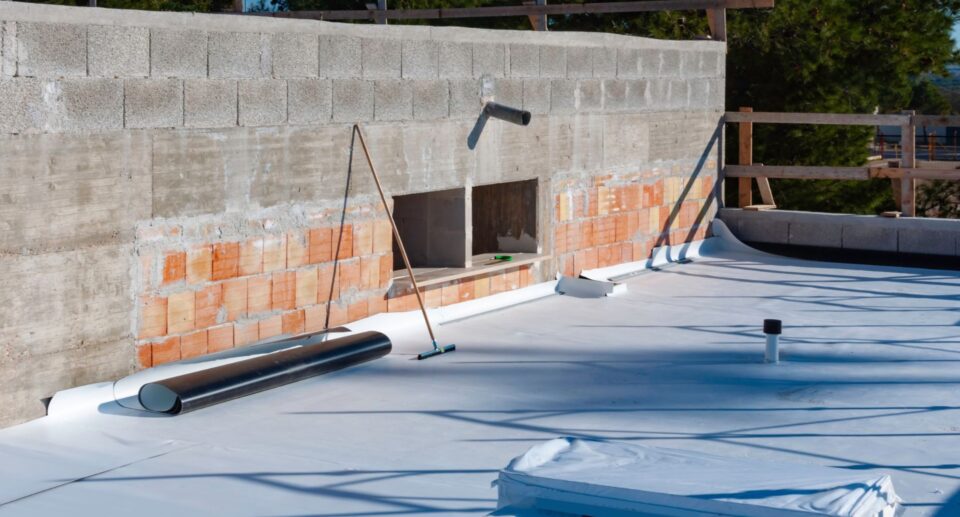Shannon Swanick TPO: What Industry Experts Won’t Tell You About Roofing

In the world of roofing, TPO (Thermoplastic Olefin) is a material that has garnered significant attention in recent years for its cost-effectiveness, energy efficiency, and durability. Among the experts and professionals discussing roofing options, Shannon Swanick is a prominent figure who has dedicated his career to improving roofing practices and educating others about sustainable and long-lasting roofing solutions. TPO roofing is one area where his insights stand out, and in this article, we will explore what industry experts may not always tell you about TPO roofing, as well as the invaluable expertise of Shannon Swanick in this domain.
Understanding TPO Roofing: The Basics
Thermoplastic Olefin (TPO) roofing is a single-ply membrane that is widely used in commercial and residential buildings. It is composed of a blend of polypropylene and ethylene-propylene rubber, which offers flexibility, durability, and resistance to weathering. TPO is typically installed in large sheets, making it one of the most efficient materials for flat or low-slope roofs.
While TPO has gained popularity due to its energy-saving properties and relatively low installation costs, it’s important to understand that not all TPO membranes are created equal. The material’s quality and performance can vary greatly depending on the manufacturer, installation technique, and maintenance practices. Shannon Swanick, a seasoned roofing expert, highlights these distinctions and provides insights into how contractors and property owners can ensure they are getting the best value from their TPO roofing systems.
Shannon Swanick’s Expertise on TPO Roofing
Shannon Swanick has spent years working with various roofing materials and techniques, and his expertise in TPO roofing has helped many property owners make informed decisions about their roofing needs. One of the key insights that Swanick shares is the importance of selecting a high-quality TPO membrane and ensuring proper installation.
Many roofing professionals may recommend TPO for its affordability and efficiency, but Swanick warns that cheaper, low-grade TPO products can often lead to costly repairs in the long run. High-quality TPO membranes offer better resistance to UV rays, ozone, and extreme temperatures, which are critical factors in ensuring the longevity of a roof. Swanick also emphasizes that the installation process is just as important as the quality of the material. Poor installation techniques can compromise the roof’s performance and lead to leaks, poor insulation, and early degradation.
Swanick’s advice goes beyond just choosing the right material; he also advises property owners to work with certified and experienced contractors who understand the nuances of TPO installation. A well-installed TPO roof can last for decades, providing excellent insulation and protecting the building from the elements. However, improper installation can significantly shorten the lifespan of the roof, leading to costly repairs and replacements.
TPO vs. Other Roofing Materials: What You Need to Know
When considering roofing materials, many property owners are faced with a range of options, including asphalt shingles, EPDM (Ethylene Propylene Diene Monomer), PVC (Polyvinyl Chloride), and TPO. While each material has its benefits, TPO stands out for its balance of affordability, performance, and environmental benefits.
Swanick stresses that one of the major advantages of TPO over other materials like asphalt shingles or EPDM is its energy efficiency. TPO reflects the sun’s rays, which helps keep buildings cooler in the summer months and reduces the need for air conditioning. This can translate into significant savings on energy bills, especially in regions with hot climates.
Additionally, TPO is highly resistant to UV rays, ozone, and harsh weather conditions. This makes it an excellent choice for commercial buildings that need a long-lasting roofing solution. While PVC is also highly durable, TPO is often considered more affordable and environmentally friendly. Unlike PVC, TPO doesn’t contain chlorine, making it a safer option for the environment.
However, Swanick also points out that TPO may not be the ideal roofing solution for every building. While it is generally considered highly durable, its performance depends on factors such as climate, building design, and proper maintenance. For example, TPO may not be the best choice for roofs that experience frequent foot traffic, as the material can sometimes be more prone to punctures compared to other options like EPDM.
The Environmental Impact of TPO Roofing
One of the often overlooked benefits of TPO roofing is its environmentally friendly properties. TPO is considered one of the most sustainable roofing materials on the market, as it is 100% recyclable. This is a crucial factor for property owners who are committed to reducing their environmental footprint.
Shannon Swanick emphasizes that the sustainability of TPO roofing extends beyond its recyclability. TPO is designed to reflect sunlight, which helps reduce the urban heat island effect and keeps buildings cooler. This leads to reduced energy consumption, making it an excellent choice for eco-conscious property owners.
Moreover, TPO roofing is free from harmful chemicals like chlorine, which are present in some other roofing materials, such as PVC. This makes TPO a safer option for both installers and the environment. The lack of toxic chemicals in TPO also contributes to its overall sustainability, as it doesn’t release harmful fumes into the air during installation or at the end of its lifespan.
The Importance of Regular Maintenance and Inspections
Even the highest quality TPO roofing systems require regular maintenance and inspections to ensure their longevity. Shannon Swanick stresses that one of the most critical aspects of maintaining a TPO roof is periodic inspections. While TPO is durable, it is not entirely immune to damage. Regular inspections can help identify early signs of wear and tear, such as membrane punctures, loose seams, or areas of pooled water. Addressing these issues promptly can help prevent more significant and costly repairs down the road.
Swanick advises property owners to schedule annual inspections with certified roofing contractors, especially after extreme weather events such as heavy storms or snowfalls. By catching issues early, property owners can extend the lifespan of their TPO roofs and avoid unnecessary expenses.
In addition to inspections, Swanick recommends keeping the roof clean and clear of debris. Leaves, branches, and other debris can cause damage to the membrane over time, especially if water becomes trapped beneath them. Keeping the roof clear of such debris allows the TPO membrane to perform at its best.
The Cost of TPO Roofing: Is It Worth It?
One of the most significant factors that influence a property owner’s decision to choose TPO roofing is cost. TPO roofing is generally considered an affordable option compared to other materials like EPDM or PVC. The relatively low installation cost, combined with its energy-efficient properties, makes TPO an attractive choice for budget-conscious property owners.
However, Shannon Swanick warns that the cost of TPO roofing can vary significantly depending on the quality of the material, the complexity of the installation, and the experience of the contractor. While TPO may seem like a budget-friendly option upfront, it’s essential to consider long-term costs. Choosing a cheap, low-quality TPO membrane may save money initially but could lead to higher repair and maintenance costs down the line.
On the other hand, investing in a high-quality TPO membrane and professional installation will provide a better return on investment over time, as it will require fewer repairs and last longer than inferior alternatives.
Conclusion: The Key to a Successful TPO Roof
In conclusion, TPO roofing is a solid option for property owners looking for an energy-efficient, durable, and cost-effective roofing material. However, as Shannon Swanick points out, there are important factors that need to be considered when choosing TPO, including the quality of the membrane, the installation process, and ongoing maintenance.
By understanding the potential pitfalls and benefits of TPO roofing, property owners can make informed decisions that will lead to a long-lasting, high-performing roof. Whether you’re considering TPO for a commercial building or a residential property, working with a qualified contractor and selecting a high-quality material is essential to getting the most out of your roofing investment.








